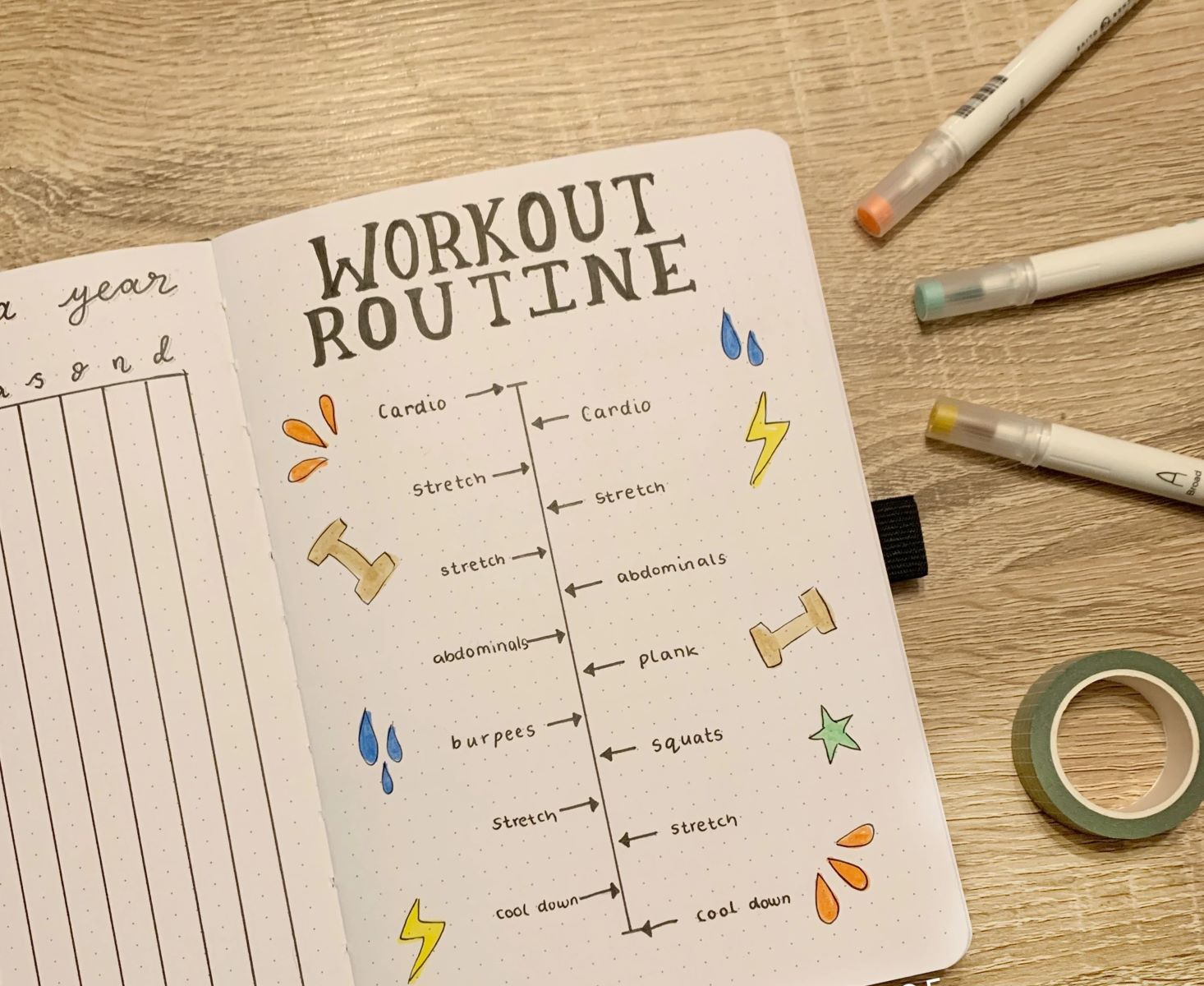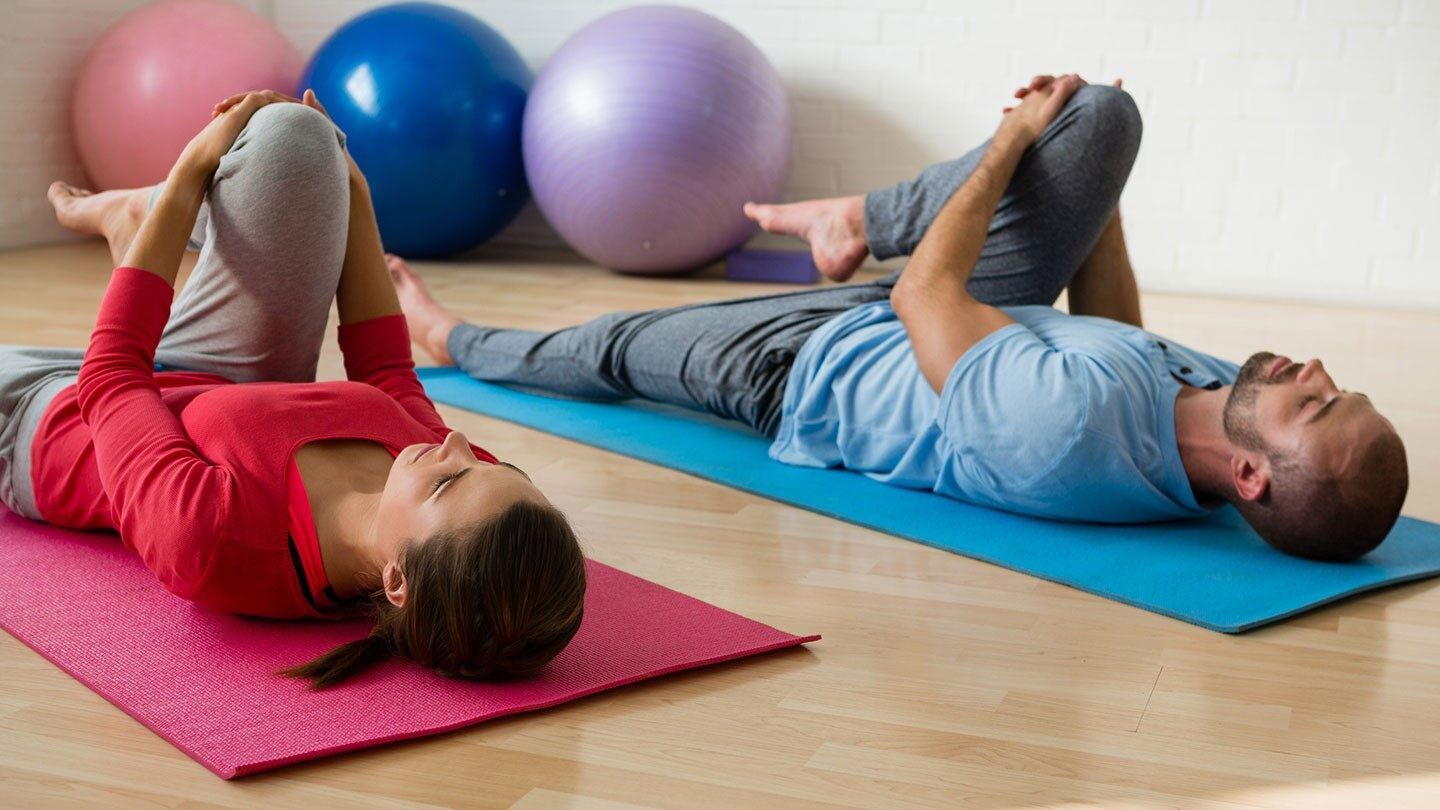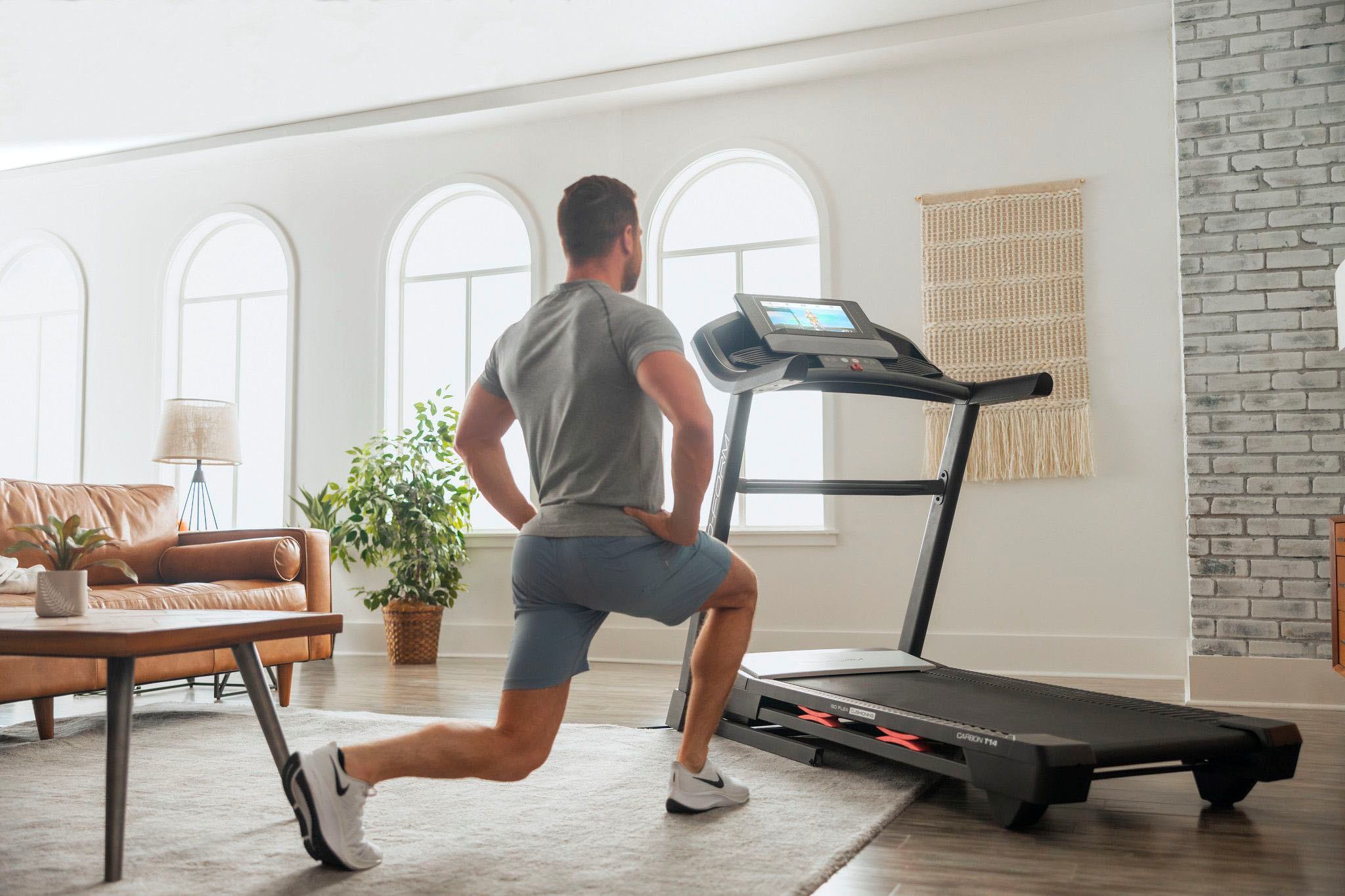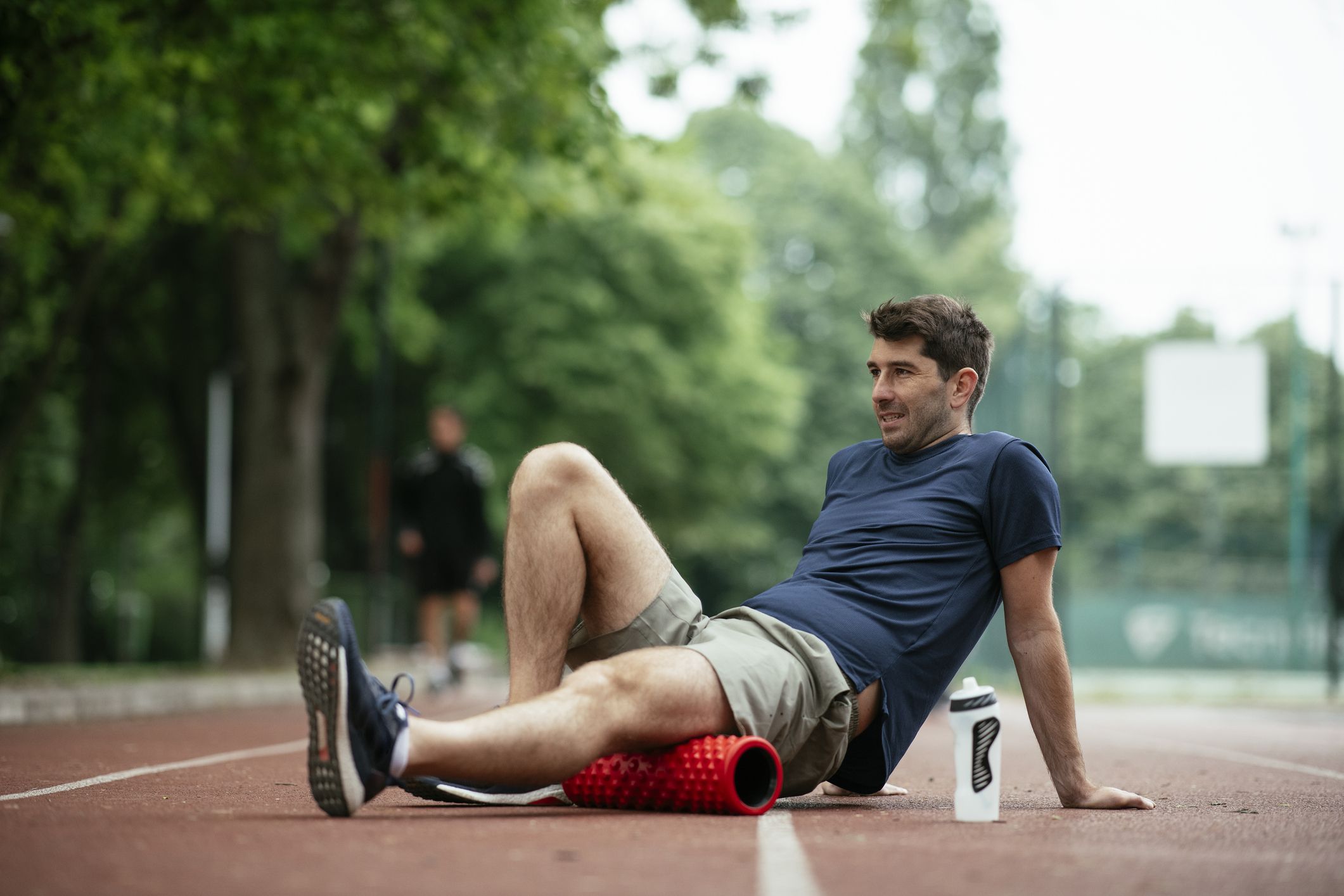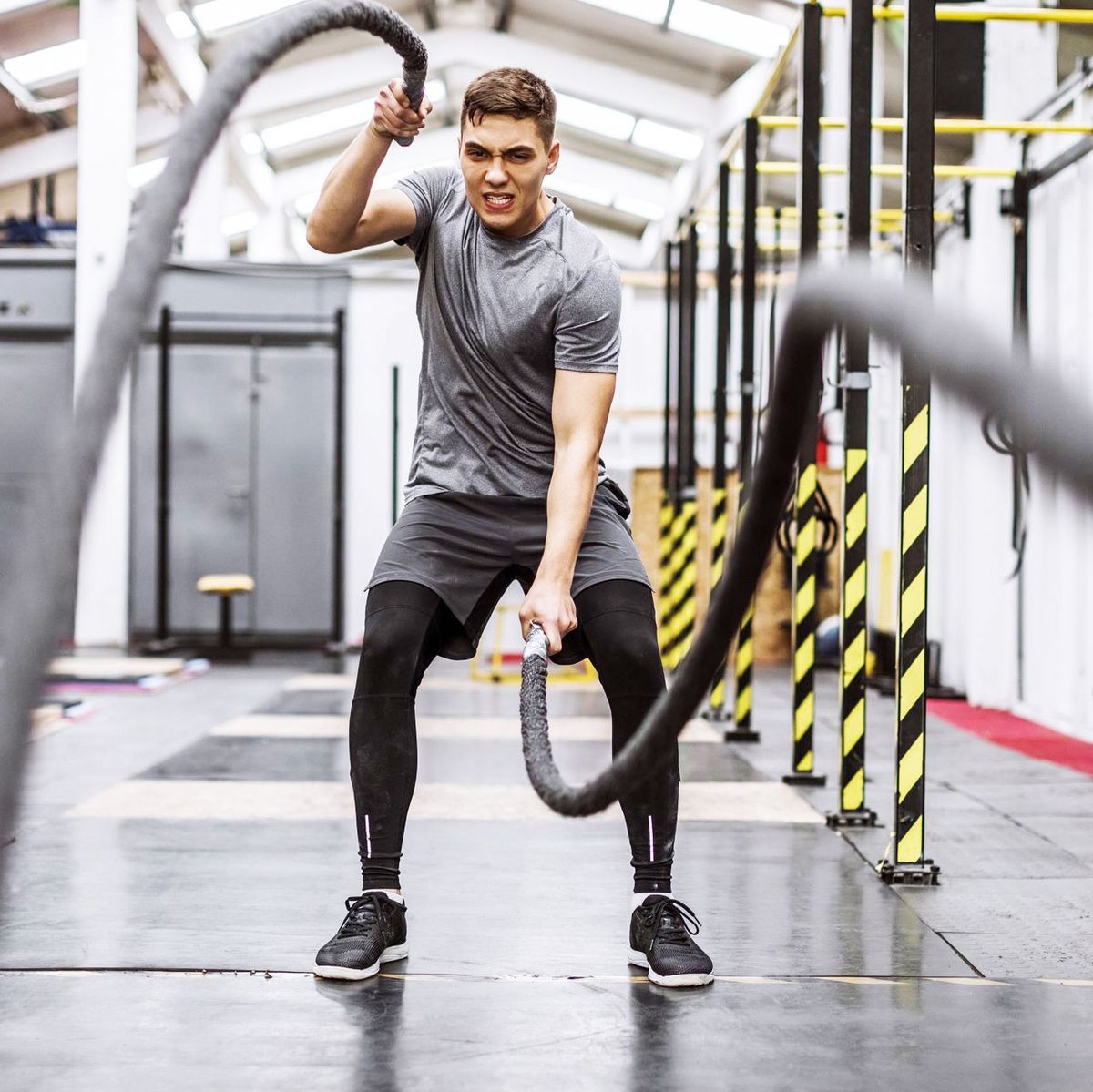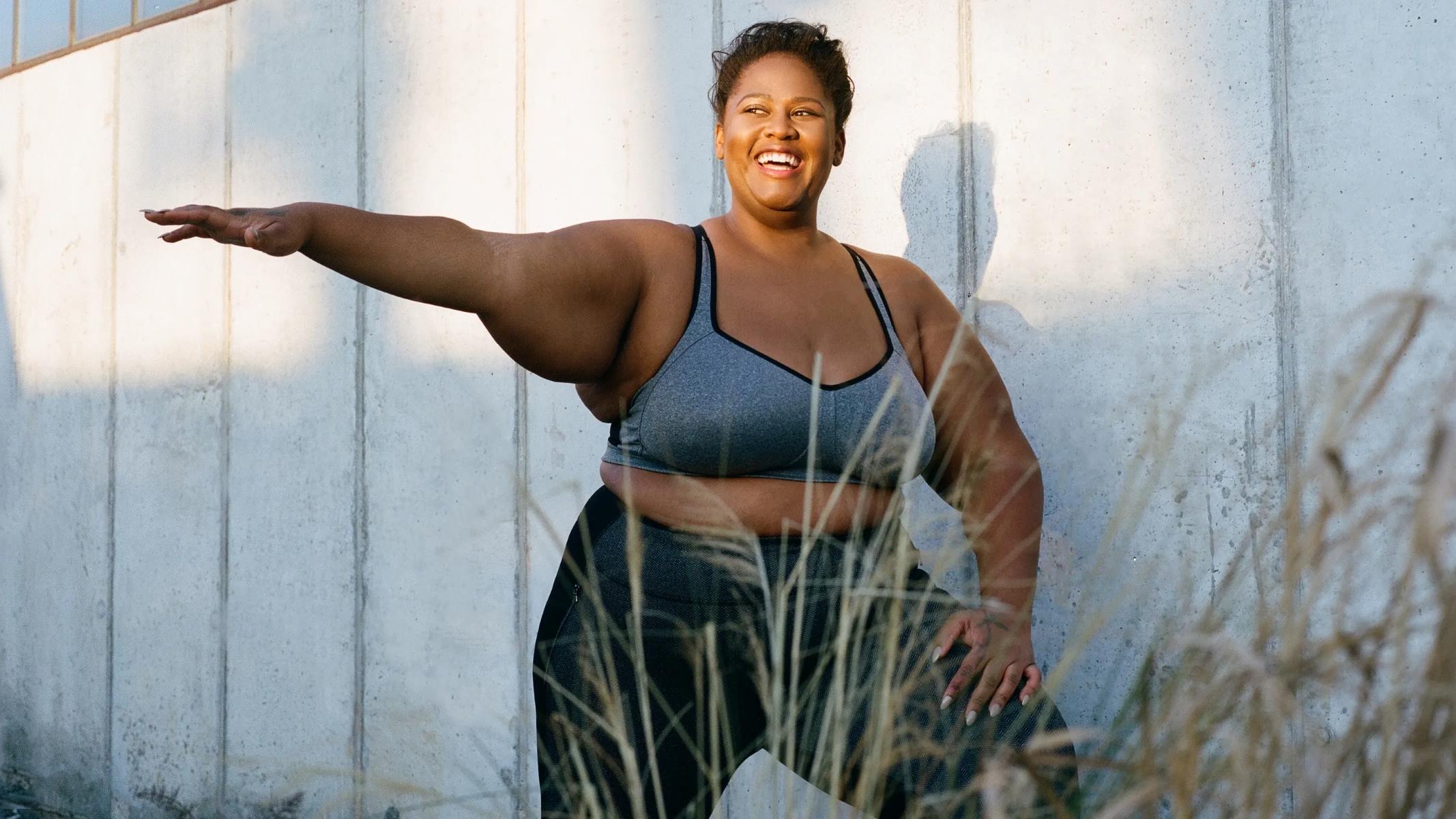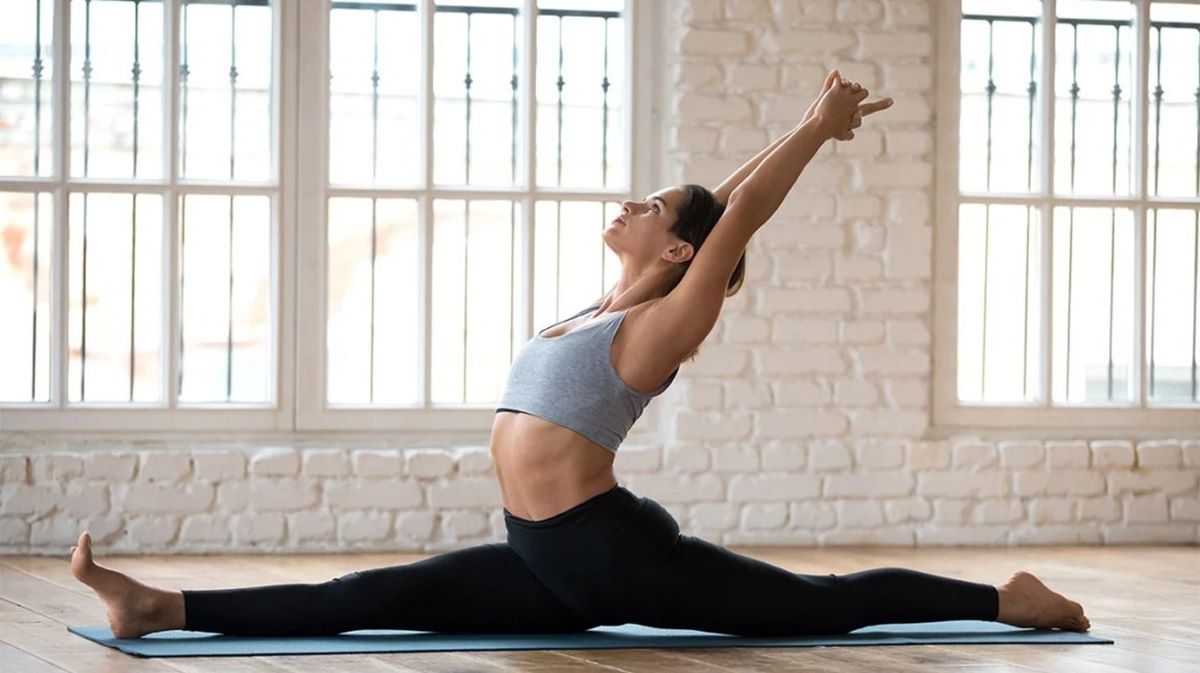

Featured
What Is A Flexibility Exercise
Published: September 29, 2023
Discover the benefits of incorporating flexibility exercises into your fitness routine. Find out how to improve your range of motion and prevent injuries with featured exercises.
Introduction
Welcome to the world of fitness and exercise! When it comes to staying fit and healthy, incorporating flexibility exercises into your routine is just as important as cardiovascular exercise and strength training. Flexibility exercises help improve joint range of motion, enhance muscle elasticity, and prevent injuries. Whether you are a seasoned athlete or a beginner, flexibility exercises can benefit individuals of all fitness levels and ages.
Flexibility exercise, or stretching, is often overlooked or seen as an afterthought by many people. However, it plays a crucial role in maintaining overall health and preventing exercise-related injuries. It involves the deliberate elongation and stretching of muscles, tendons, and ligaments to increase their flexibility and improve joint mobility.
Regular participation in flexibility exercises can improve athletic performance, aid in post-workout recovery, and promote better posture and body alignment. Additionally, flexibility exercises can be a great way to relieve muscle tension, reduce muscle soreness, and enhance relaxation and stress relief.
In this article, we will explore the definition and benefits of flexibility exercises, different types of flexibility exercises, the importance of performing them correctly, and their role in injury prevention and performance enhancement. We will also discuss the importance of flexibility exercises in different age groups and their relevance in various forms of physical activity.
So, if you’re ready to embark on a journey towards greater flexibility, improved performance, and overall well-being, let’s dive in and explore the wonderful world of flexibility exercises!
Definition of Flexibility Exercise
Flexibility exercise, also known as stretching, involves the deliberate elongation and stretching of muscles, tendons, and ligaments to improve joint range of motion and muscle flexibility. It is a key component of overall fitness and plays a crucial role in maintaining optimal health and physical performance.
Flexibility exercises aim to increase muscle length and elasticity, allowing for greater freedom of movement in joints. These exercises involve static or dynamic stretching techniques that gradually lengthen the muscle fibers and improve their ability to stretch without causing discomfort or injury.
Static stretching is the most common form of flexibility exercise. It involves holding a stretch for a certain period of time, typically around 20-30 seconds, without any bouncing or jerking movements. This type of stretching is effective for improving muscle flexibility and reducing muscle tension.
Dynamic stretching, on the other hand, involves controlled movements that mimic the motions of a specific activity or sport. It is often used as part of a warm-up routine to prepare the body for more intense physical activity. Dynamic stretching involves active movements that progressively increase the range of motion while keeping the muscles engaged.
Flexibility exercises can be performed using various techniques, including passive stretching, active stretching, and proprioceptive neuromuscular facilitation (PNF) stretching. Passive stretching involves the use of external forces, such as a partner or a stretching strap, to assist in achieving a deeper stretch. Active stretching, on the other hand, relies on the individual’s own muscles to generate the stretch. PNF stretching combines passive stretching with isometric contractions to improve flexibility.
Overall, flexibility exercises are designed to improve joint mobility, enhance muscle flexibility, and promote optimal alignment and posture. By incorporating flexibility exercises into your routine, you can achieve better overall physical performance and reduce the risk of injuries during physical activity or sports.
Benefits of Flexibility Exercise
Flexibility exercises offer a wide range of benefits for both the body and mind. Incorporating these exercises into your fitness routine can have a positive impact on your overall well-being. Let’s explore some of the key benefits of flexibility exercise:
1. Improved Joint Range of Motion: Flexibility exercises help increase the range of motion in your joints, allowing you to move more freely and perform daily activities with ease. This is particularly beneficial for athletes and individuals involved in sports that require a wide range of motion, such as gymnastics, dance, or martial arts.
2. Enhanced Muscle Flexibility: Regular stretching promotes muscle elongation and flexibility, which can improve muscle function and performance. It also helps reduce muscle tension and stiffness, leading to improved muscle coordination and balance.
3. Reduced Risk of Injuries: Flexibility exercises help improve joint mobility and muscle flexibility, reducing the risk of muscle strains, sprains, and joint injuries. By improving the flexibility of your muscles and tendons, you can also minimize the chances of overstretching or tearing during physical activity.
4. Improved Posture and Alignment: Flexibility exercises can help correct muscle imbalances and postural issues. By stretching tight muscles and strengthening weaker ones, you can achieve better alignment and posture, reducing the strain on your muscles and joints.
5. Enhanced Athletic Performance: Increased flexibility contributes to better athletic performance in various sports and physical activities. It allows for greater efficiency of movement, improved agility, and enhanced power output. Flexibility exercises also aid in muscle recovery post-workout, reducing muscle soreness and promoting faster muscle repair.
6. Stress Relief and Relaxation: Stretching not only benefits the body but also relaxes the mind. Flexibility exercises promote relaxation, reduce stress levels, and improve mental well-being. They can be especially helpful after a long and hectic day, providing a calming and soothing effect on both body and mind.
7. Improved Circulation: Flexibility exercises stimulate blood flow to the muscles, organs, and tissues, improving overall circulation. This can help deliver essential nutrients to the muscles and promote faster recovery after physical activity.
8. Increased Body Awareness: Regular stretching brings awareness to your own body and its limitations. You become more attuned to how your body feels and moves, allowing you to identify areas of tightness or weakness that may need attention.
In summary, flexibility exercises offer a multitude of benefits, including improved joint range of motion, enhanced muscle flexibility, reduced risk of injuries, improved posture, and enhanced athletic performance. Additionally, they provide stress relief, improve circulation, and increase body awareness. Incorporating flexibility exercises into your fitness routine can significantly improve your overall physical and mental well-being.
Types of Flexibility Exercises
Flexibility exercises encompass a variety of techniques and movements that target different muscle groups and joints in the body. Here are some of the common types of flexibility exercises:
1. Static Stretching: This is the most common and straightforward type of flexibility exercise. It involves holding a stretch for a certain period of time without any bouncing or jerking movements. Static stretches can be done standing, sitting, or lying down and typically target specific muscle groups.
2. Dynamic Stretching: Dynamic stretching involves moving your body through controlled and continuous motions that mimic the actions of a specific activity or sport. Unlike static stretching, dynamic stretching involves active movements that progressively increase the range of motion while keeping the muscles engaged.
3. Proprioceptive Neuromuscular Facilitation (PNF): PNF stretching is a more advanced form of flexibility exercise that combines passive stretching with muscle contractions. It involves stretching a muscle group to its limits, followed by an isometric contraction of the target muscle for a few seconds. This technique is performed with a partner or a resistance band to achieve a deeper stretch.
4. Ballistic Stretching: Ballistic stretching involves rapid and sometimes uncontrolled movements to increase muscle length and range of motion. This type of stretching is more aggressive and can be effective for athletes involved in sports that require explosive movements. However, it carries a higher risk of injury and is not recommended for beginners or individuals with muscle imbalances or joint issues.
5. Athletic Stretching: This type of stretching is specific to athletes and individuals involved in sports that require high flexibility and mobility. It includes a combination of dynamic stretches, sport-specific movements, and active isolated stretches to prepare the body for intense physical activity.
6. Yoga and Pilates: Yoga and Pilates incorporate various flexibility exercises within their practice. These disciplines focus on both physical and mental well-being, combining elements of strength, flexibility, balance, and mindfulness. They utilize a combination of static and dynamic stretches to promote overall flexibility and body awareness.
7. Stretching with Equipment: Certain flexibility exercises can be enhanced by using equipment such as stretching straps, yoga blocks, foam rollers, or resistance bands. These tools can assist in achieving deeper stretches and targeting specific muscle groups effectively.
It’s important to note that the choice of flexibility exercises may vary depending on individual needs, fitness goals, and physical condition. It’s recommended to consult with a fitness professional or a licensed trainer to determine the most suitable types of flexibility exercises for your specific needs and ensure they are performed safely and effectively.
Common Flexibility Exercises
There are numerous flexibility exercises that can be incorporated into your fitness routine to improve joint mobility, increase muscle flexibility, and enhance overall flexibility. Here are some common flexibility exercises:
1. Hamstring Stretch: Sit on the floor with one leg extended and the other leg bent. Reach towards your toes, keeping your back straight. Hold the stretch for 20-30 seconds on each leg. This stretch targets the muscles at the back of the thighs.
2. Quadriceps Stretch: Stand upright and bend one knee, bringing your foot towards your glutes. Grasp your foot with your hand and gently pull it closer to your body. Hold for 20-30 seconds and then switch to the other leg. This stretch targets the muscles at the front of the thighs.
3. Chest Stretch: Stand with your feet shoulder-width apart. Interlace your fingers behind your back, straighten your arms, and lift them while squeezing your shoulder blades together. Hold for 20-30 seconds. This stretch targets the chest and shoulder muscles.
4. Triceps Stretch: Extend one arm overhead and bend it at the elbow, reaching your hand down your back. Use your other hand to gently press on your elbow to deepen the stretch. Hold for 20-30 seconds on each arm. This stretch targets the muscles at the back of the upper arms.
5. Child’s Pose: Start on your hands and knees, then sit back onto your heels. Extend your arms forward and lower your chest towards the floor. Hold for 20-30 seconds. This stretch targets the lower back, hips, and shoulders.
6. Standing Side Stretch: Stand with your feet hip-width apart and interlace your fingers overhead. Lean gently to one side, feeling the stretch on the opposite side. Hold for 20-30 seconds on each side. This stretch targets the sides of the torso and the ribcage.
7. Seated Forward Bend: Sit on the floor with your legs extended in front of you. Reach forward, lengthening your spine, and try to touch your toes. Hold the stretch for 20-30 seconds. This stretch targets the muscles in the lower back and the back of the legs.
8. Neck Stretch: Gently tilt your head to one side, bringing your ear towards your shoulder. Hold for 10-15 seconds and then switch to the other side. You can also perform a forward and backward tilt to stretch the muscles of the neck.
Remember to perform these stretches in a slow and controlled manner, without bouncing or jerking movements. It’s important to listen to your body and stretch to the point of mild tension, avoiding any sharp or painful sensations. If you have any underlying medical conditions or injuries, consult with a healthcare professional before attempting new flexibility exercises.
Incorporating these common flexibility exercises into your fitness routine can help improve joint mobility, increase muscle flexibility, and promote overall flexibility. It’s essential to perform them regularly and consistently to achieve the best results.
Tips for Performing Flexibility Exercises Properly
Flexibility exercises can be highly effective when performed correctly. To ensure you get the most benefit and reduce the risk of injury, it’s important to follow these tips when performing flexibility exercises:
1. Warm Up: Prior to doing any flexibility exercises, it’s important to warm up your muscles with light aerobic activity, such as brisk walking or jogging. This helps increase blood flow to the muscles and prepares them for stretching.
2. Start Slow: Begin with gentle stretches and gradually increase the intensity or duration over time. Avoid forcing a stretch or going beyond your comfortable range of motion, as this can lead to injury.
3. Breathe: Remember to breathe deeply and steadily during each stretch. Inhale deeply before starting the stretch, and exhale as you deepen into it. This helps relax the muscles and allows for a more effective stretch.
4. Focus on Proper Alignment: Maintain proper body alignment during each stretch. This means keeping your spine neutral, shoulders relaxed, and avoiding excessive twisting or leaning. Proper alignment ensures that the stretch is targeting the intended muscle group.
5. Hold the Stretch: Hold each stretch for about 20-30 seconds. This allows the muscles time to lengthen and relax. Avoid bouncing or jerking movements, as these can cause injury.
6. Target All Major Muscle Groups: Include stretches that target all major muscle groups in your body. This ensures balanced flexibility and reduces the risk of muscle imbalances.
7. Listen to Your Body: Pay attention to how your body feels during each stretch. If you feel pain or discomfort, ease off the stretch and modify it as needed. Flexibility exercises should never cause sharp or intense pain.
8. Be Consistent: Regularity is key when it comes to flexibility exercises. Aim to incorporate stretching into your fitness routine at least two to three times per week to maintain and improve flexibility over time.
9. Stay Hydrated: Proper hydration is crucial for maintaining muscle elasticity and preventing muscle cramps. Drink sufficient water before and after your flexibility exercises to keep your muscles hydrated.
10. Seek Professional Guidance: If you are new to flexibility exercises or have specific goals or concerns, consider seeking guidance from a qualified fitness professional or physical therapist. They can provide personalized recommendations and ensure proper form and technique.
By following these tips, you can ensure that you are performing flexibility exercises properly and safely. Flexibility exercises should always be done within your comfort and ability level, and it’s important to listen to your body’s cues. With consistency and proper technique, you can improve your flexibility, enhance muscle function, and reduce the risk of injuries.
Flexibility Exercise and Injury Prevention
Flexibility exercises play a vital role in injury prevention by enhancing joint mobility, increasing muscle flexibility, and reducing the risk of muscle strains, sprains, and other common injuries. Here’s how flexibility exercise helps in preventing injuries:
1. Improved Range of Motion: Flexibility exercises help increase joint range of motion, allowing your joints to move freely and without restriction. This improved mobility reduces the risk of joint injuries during activities that require a wide range of motion.
2. Enhanced Muscle Flexibility: By regularly stretching and elongating your muscles, flexibility exercises improve their flexibility and elasticity. This helps to reduce muscle tension and promote optimal muscle function, reducing the risk of muscle strains and tears.
3. Corrects Muscle Imbalances: Flexibility exercises can address muscle imbalances by stretching tight muscles and strengthening weaker ones. Imbalances in muscle strength and flexibility can lead to poor movement patterns and compensatory mechanisms, increasing the risk of injuries. By correcting these imbalances, flexibility exercises help prevent injury.
4. Improved Body Alignment and Posture: Poor posture and body alignment can increase the risk of strain on certain muscles and joints. Flexibility exercises, such as stretches for the muscles responsible for maintaining proper posture, can help correct imbalances and promote better alignment. This, in turn, reduces the strain on specific parts of the body and minimizes the risk of associated injuries.
5. Prepares the Body for Physical Activity: Engaging in dynamic stretching or specific flexibility exercises prior to physical activity or sports can help warm up the muscles, increase blood flow, and prepare the body for intense movements. This pre-activity flexibility routine improves muscle elasticity and reduces the risk of injuries during physical exertion.
6. Enhances Muscle Recovery: Flexibility exercises done post-workout can aid in muscle recovery and reduce muscle soreness. Stretching after exercise promotes blood circulation to the muscles, helping to remove waste products and deliver essential nutrients for faster recovery.
7. Promotes Mind-Body Connection: Participating in flexibility exercises promotes body awareness and mindfulness. By paying attention to your body’s sensations and limitations during stretches, you become more in-tune with any signs of discomfort or potential injury. This increased mind-body connection helps prevent overexertion and potential injuries.
It’s important to note that while flexibility exercises can be beneficial for injury prevention, they should be performed correctly and within your individual fitness level. It’s recommended to start with gentle stretches and gradually increase intensity or duration over time. If you have any existing injuries or medical conditions, consult with a healthcare professional or a licensed trainer for personalized guidance.
By incorporating flexibility exercises into your fitness routine, you can improve joint mobility, increase muscle flexibility, correct imbalances, and enhance body alignment. These benefits, in turn, reduce the risk of injuries and allow you to perform physical activities and sports more safely and effectively.
Flexibility Exercise and Performance Enhancement
Flexibility exercises not only contribute to injury prevention but can also significantly enhance overall physical performance. Here’s how flexibility exercise can improve performance:
1. Improved Range of Motion (ROM): Flexibility exercises help increase joint flexibility and range of motion. This increased ROM allows for greater freedom of movement, leading to improved athletic performance in sports and activities that require a wide range of motion, such as gymnastics, martial arts, and dance.
2. Enhanced Muscle Function: By increasing muscle flexibility, flexibility exercises improve muscle function and performance. This enhanced flexibility enables muscles to contract and relax more efficiently, resulting in improved power, speed, and endurance during physical activities and sports.
3. Greater Muscle Efficiency: Flexibility exercises promote optimal muscle length-tension relationships. Muscles that are too tight or too short are at a disadvantage as they cannot generate full force or move efficiently. By improving muscle flexibility, flexibility exercises allow muscles to function at their optimal length, enhancing overall muscle efficiency.
4. Injury Prevention: As mentioned earlier, flexibility exercises help prevent common injuries by improving joint mobility and reducing muscle tension. Avoiding injuries not only keeps athletes and individuals active but also allows them to maintain consistent training and performance levels.
5. Enhanced Muscle Recovery: Flexibility exercises, when performed after a workout or training session, can aid in muscle recovery. Stretching helps reduce muscle soreness and fatigue by increasing blood flow to the muscles and promoting faster removal of waste products. Speedy muscle recovery allows athletes to bounce back quickly and maintain high performance levels.
6. Increased Body Awareness: Regular participation in flexibility exercises cultivates a greater mind-body connection. Athletes who are more aware of their bodies can develop a better understanding of their strengths, weaknesses, and movement patterns. This awareness translates into better proprioception, coordination, and control, which contribute to enhanced performance.
7. Improved Posture and Body Alignment: Flexibility exercises align the body, improving posture, and body mechanics. Proper posture and alignment ensure optimal force transmission and efficient movement patterns, resulting in better performance and reduced stress on joints and muscles.
8. Mental Relaxation and Stress Relief: Flexibility exercises, such as yoga or gentle stretching, promote relaxation and reduce stress. Lower stress levels not only benefit mental well-being but also enhance overall performance by allowing athletes to approach their training and competitions with a calm and focused mindset.
By incorporating flexibility exercises into training routines, athletes and individuals can optimize their performance by improving range of motion, enhancing muscle function, preventing injuries, and aiding in muscle recovery. Flexibility exercises also contribute to improved body awareness and can provide mental relaxation and stress relief, fostering a holistic approach to athletic performance.
Flexibility Exercise for Different Age Groups
Flexibility exercises are beneficial for people of all age groups, from children to older adults. Here’s a closer look at how flexibility exercises can be adapted for different age groups:
1. Children and Adolescents: Flexibility exercises are important for promoting healthy growth and development in children and adolescents. Younger age groups can focus on exercises that promote overall flexibility and mobility, such as stretching and yoga poses. It’s important to ensure that exercises are age-appropriate and performed under proper supervision to prevent injury.
2. Young Adults and Middle-Aged Adults: Flexibility exercises for young and middle-aged adults can focus on maintaining and improving joint mobility, muscle flexibility, and posture. Dynamic stretching can be incorporated as part of warm-up routines before physical activity. Incorporating yoga or Pilates classes into the fitness routine can also provide a well-rounded flexibility workout.
3. Older Adults: Flexibility exercises become even more important as we age, as they help maintain joint health, prevent age-related muscle stiffness, and improve balance and posture. Gentle stretching exercises, such as tai chi or gentle yoga, can help improve flexibility without putting excessive strain on the joints. It’s essential for older adults to perform flexibility exercises within their individual capabilities and with proper guidance.
4. Seniors and Aging Population: Flexibility exercises for seniors and the aging population focus on maintaining joint mobility and preventing falls. Gentle range-of-motion exercises, chair yoga, and water-based activities, such as aqua aerobics, can be effective in improving flexibility and overall mobility while minimizing the risk of injury.
It’s important to remember that regardless of age, gradually building flexibility through regular practice is key. Start with gentle stretches and progress slowly over time. It’s also important to consider any age-related limitations or medical conditions when choosing and performing flexibility exercises.
Seeking guidance from a qualified fitness professional or physical therapist, especially for older adults or individuals with specific health considerations, can ensure that flexibility exercises are done safely and effectively.
Flexibility exercises provide numerous benefits regardless of age, including improved joint mobility, enhanced muscle flexibility, better posture, and reduced risk of injury. By incorporating age-appropriate flexibility exercises into routines, individuals of all ages can maintain a healthy and active lifestyle.
Flexibility Exercise in Various Forms of Physical Activity
Flexibility exercises are not limited to traditional stretching routines but can also be integrated into various forms of physical activity to improve performance and reduce the risk of injuries. Here’s how flexibility exercise can enhance different types of physical activity:
1. Athletics and Sports: Flexibility exercises play a crucial role in sports and athletics by improving joint mobility, muscle flexibility, and overall performance. Athletes can incorporate dynamic stretching as part of their warm-up routines to prepare the body for the specific movements and demands of their sport. By targeting sport-specific muscle groups, flexibility exercises can help athletes achieve optimal range of motion and enhance their agility, speed, and power.
2. Weightlifting and Strength Training: Flexibility exercises are often overlooked in strength training, but they are essential for proper muscle function and injury prevention. Integrating dynamic stretching and mobility exercises between weightlifting sets can help maintain joint mobility and prevent muscle imbalances. Improved flexibility can also allow individuals to perform exercises with a full range of motion, maximizing the benefits of strength training.
3. Dance and Ballet: Flexibility is a fundamental aspect of dance and ballet. Dancers incorporate a variety of flexibility exercises into their training routines to achieve graceful movements, high kicks, and splits. Stretching exercises specific to the demands of dance can help dancers improve their extension, extension control, and overall flexibility, enhancing their performance and reducing the risk of dance-related injuries.
4. Martial Arts: Flexibility exercises are essential for martial artists to perform kicks, strikes, and defensive movements effectively. Martial arts disciplines often include dynamic stretching and intense static stretching to improve kicking height, leg flexibility, and fluid movements. Proper flexibility enhances techniques, allows for faster reaction times, and reduces the risk of muscle strains or tears during training or sparring.
5. Yoga and Pilates: Yoga and Pilates are forms of exercise that primarily focus on flexibility, core strength, and body awareness. These practices incorporate various flexibility exercises, including static stretching, dynamic movements, and poses that challenge both strength and flexibility. The combination of strength and flexibility training in these disciplines benefits overall physical performance, posture, balance, and mental well-being.
6. Endurance Sports: Flexibility exercises can benefit endurance athletes, such as runners, cyclists, and swimmers, in several ways. By maintaining good joint mobility and muscle flexibility, athletes can improve performance and reduce the risk of overuse injuries. Incorporating post-workout stretching routines and exercises that target specific muscle groups involved in their respective sports can help athletes recover more effectively and maintain flexibility between training sessions.
Remember, the type and intensity of flexibility exercises will vary based on the specific demands of the activity or sport. It’s recommended to consult with a fitness professional or coach who specializes in the particular activity or sport to ensure that flexibility exercises are tailored to individual needs and goals. By integrating flexibility exercises into various forms of physical activity, individuals can enhance performance, prevent injuries, and optimize their overall fitness journey.
Conclusion
Flexibility exercises are a crucial component of overall fitness and have numerous benefits for people of all ages and fitness levels. Incorporating flexibility exercises into your routine can improve joint mobility, increase muscle flexibility, enhance athletic performance, and reduce the risk of injuries.
Whether you are an athlete looking to optimize your performance, an individual seeking to improve your overall wellness, or someone who simply wants to move and feel better, flexibility exercises can play a significant role in achieving your goals.
Remember to start slowly and gradually increase the intensity and duration of your flexibility exercises over time. Listen to your body, perform exercises within your comfort and capability, and consult with a fitness professional or healthcare provider if you have any concerns or underlying medical conditions.
Explore different types of flexibility exercises, such as static stretching, dynamic stretching, and yoga, to find what works best for you. Incorporate flexibility exercises as part of your warm-up, cool-down, and recovery routines to optimize their benefits.
Finally, practice consistency and make flexibility exercises a regular part of your fitness routine. The more frequently you engage in these exercises, the better the results you will see in terms of improved range of motion, enhanced muscle function, and reduced risk of injuries.
So, whether you’re a seasoned athlete, a fitness enthusiast, or simply looking to improve your overall well-being, don’t neglect the power and importance of flexibility exercises. Embrace them and unlock the benefits of improved flexibility, increased performance, and a healthier, more active lifestyle.


